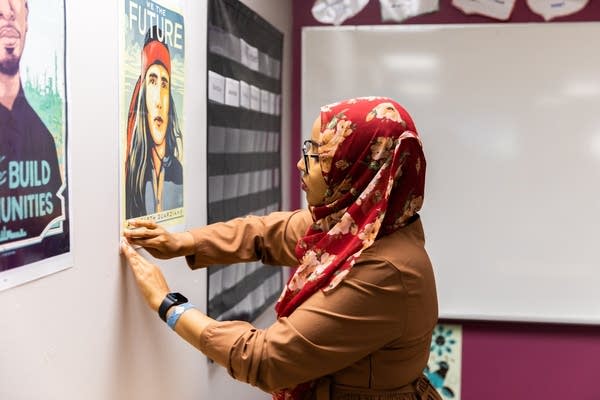MN school districts say they want to fill classrooms with talented teachers of color; then they lay them off

Qorsho Hassan, Minnesota's 2020 Teacher of the Year, puts a poster on the wall of her new fourth grade classroom at Echo Park Elementary School. It's her first year in the Rosemount-Apple Valley-Eagan district after Burnsville schools laid her off last year.
Jaida Grey Eagle | Sahan Journal
Go Deeper.
Create an account or log in to save stories.
Like this?
Thanks for liking this story! We have added it to a list of your favorite stories.


